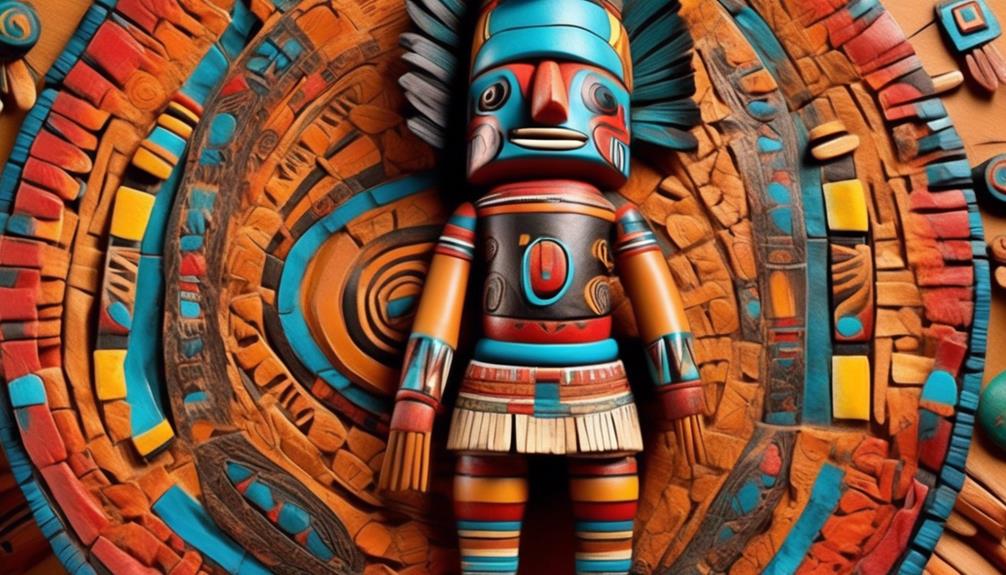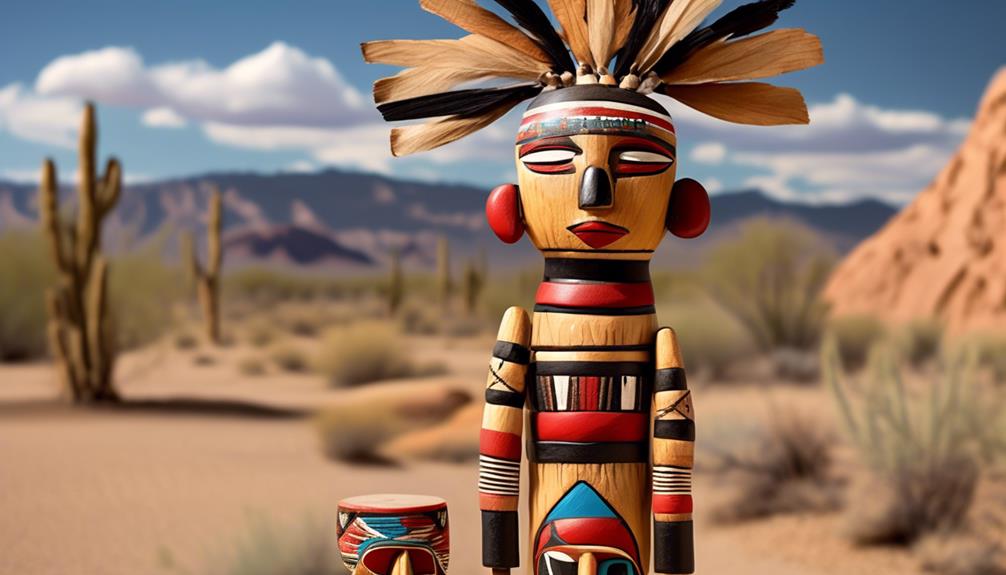
Guardians of the Sacred: The Enduring Wisdom of Hopi Spiritual Beliefs
The mesas of northeastern Arizona rise majestically from the desert floor, ancient sentinels guarding a profound and enduring spiritual tradition. Here, for millennia, the Hopi people have cultivated not just corn in the arid earth, but a way of life deeply intertwined with the cosmos, a philosophy of balance, humility, and unwavering connection to the land. Unlike many Indigenous cultures whose spiritual practices were fragmented or lost under colonial pressures, Hopi traditional beliefs have persisted with remarkable integrity, offering a timeless wisdom in a rapidly changing world.
At the heart of Hopi spirituality is the concept of Hopi Way – a path of peace, harmony, and respectful living. It’s a worldview shaped by an intricate cosmology, a cyclical understanding of time, and a profound reverence for all life. This isn’t merely a set of dogmas but a lived experience, woven into every aspect of daily life, from planting crops to naming children, from storytelling to intricate ceremonies.

The Emergence: A Journey Through Worlds
Hopi cosmology is centered on the concept of emergence through successive worlds. According to their oral traditions, humanity did not begin in this present world, but ascended from three previous, imperfect worlds through a spiritual opening known as Sipapu. Each previous world ended in catastrophe – fire, ice, or flood – due to humanity’s growing disharmony, greed, and abandonment of the Creator’s laws.
"We have passed through three worlds," explains a common Hopi teaching. "Each time, the people forgot their true purpose, became corrupt, and were destroyed. We are now in the Fourth World, and we have been given the responsibility to live in balance, to care for the earth, and to remember who we are."
This journey of emergence symbolizes a continuous process of purification and learning. The people migrated across the land, guided by spiritual signs, until they reached the Four Corners region, their destined homeland, where they established their villages atop the mesas. This epic journey instilled in them a deep sense of their place in the universe and the critical importance of living in alignment with cosmic principles.
Kachinas: Messengers from the Spirit Realm
Perhaps the most visually striking and widely recognized aspect of Hopi spirituality are the Kachinas (or Katsinam). These are not gods, but spirit beings who represent the benevolent forces of the natural world, the ancestors, and the clouds. They are seen as intermediaries between the human world and the spiritual realm, bringing blessings, rain, wisdom, and sometimes, warnings.
During the first half of the year, from December (the Winter Solstice ceremony of Soyal) to July (the Niman or Home Dance), these spirits are believed to be present in the Hopi villages. Hopi men embody the Kachinas by wearing elaborate masks, costumes, and body paint, performing intricate dances in the plaza. These performances are not mere entertainment; they are sacred rituals through which the Kachinas impart their blessings, teachings, and disciplinary lessons to the community, particularly the children.
Kachina dolls, often mistakenly called "idols" by outsiders, are carved figures representing the various Kachinas. These are not worshipped but are given to Hopi children, especially girls, as educational tools. They serve as tangible reminders of the spirits, helping children learn to identify different Kachinas, understand their characteristics, and remember the stories and lessons associated with them. Each Kachina has a specific role, from the Corn Kachina bringing sustenance to the Ogre Kachina teaching children about good behavior.

The Sacred Cycles: Corn, Water, and Ceremony
Hopi life is intrinsically linked to the agricultural cycle, particularly the cultivation of corn. Corn is not just food; it is a sacred relative, a symbol of life, sustenance, and the enduring connection between the people and the earth. Hopi farmers practice dry farming, relying solely on rain and snowmelt in an arid environment, a testament to their deep faith and understanding of the land. This practice itself is a spiritual act, demanding patience, humility, and unwavering belief in the reciprocal relationship between humanity and the natural world.
"We plant the corn not knowing if the rain will come," a Hopi elder might explain. "But we plant it with faith, knowing that we have done our part, and the Kachinas, the clouds, the Creator, will do theirs."
This intimate relationship with the earth is reflected in their ceremonial calendar, which follows the sun’s solstices and the moon’s phases. Major ceremonies mark the turning points of the year:
- Soyal (Winter Solstice): The most sacred ceremony, marking the return of the sun and the beginning of the ceremonial cycle. It is a time for purification, prayer for the new year, and the formal invitation of the Kachinas back to the villages.
- Powamu (Bean Dance): Held in February, this ceremony signifies purification, initiation for young boys into the Kachina societies, and prayers for fertility and bountiful crops. It’s also when bean sprouts, grown in kivas (underground ceremonial chambers) during the winter, are distributed, symbolizing the coming growth.
- Niman (Home Dance): In July, this marks the departure of the Kachinas back to their spirit homes. It is a ceremony of farewell, thanks, and a period of rest from major public rituals until the next Soyal.
These ceremonies are vital not just for the Hopi but, in their belief, for the balance of the entire world. Through their prayers, songs, and dances, the Hopi believe they help maintain cosmic order, ensure the flow of life, and sustain the very fabric of existence.
Prophecy and the Path of Purification
A cornerstone of Hopi belief is their extensive body of prophecy, much of which concerns the future of humanity and the Earth. These prophecies speak of a time of great imbalance, technological advancement without wisdom, and a loss of connection to the natural world – conditions that many believe resonate with the modern era.
One of the most widely known prophecies concerns the "Blue Star Kachina." When this star (interpreted by some as a celestial event, by others as a spiritual sign) appears, it will signal a time of great purification, a turning point for humanity. The prophecies describe two paths: one of destruction for those who continue to live out of harmony, and another of survival and renewal for those who embrace the "Hopi Way" – a path of peace, respect, and spiritual living.
Hopi elders have long warned against the misuse of technology, the destruction of the environment, and the pursuit of material wealth over spiritual well-being. They have spoken of a time when the "web of life" would be threatened and when humanity would face a choice: to return to balance or face devastating consequences. These prophecies are not about fear, but about guidance and responsibility, urging humanity to remember its inherent connection to all things.
Resilience in the Modern World
In an increasingly globalized and secular world, the Hopi have faced immense pressures. Their lands have been coveted for resources like coal and water, their sacred sites threatened, and their traditional ways challenged by external influences. Yet, through it all, their spiritual beliefs have acted as an anchor, providing a profound sense of identity and purpose.
The Hopi often choose a path of quiet resistance and patient endurance. They have consistently advocated for peace, environmental stewardship, and the preservation of their cultural integrity. Their elders continue to transmit the ancient wisdom through oral tradition, ensuring that the younger generations understand their sacred responsibilities.
The Hopi spiritual tradition is a living testament to the power of continuity and the profound wisdom that arises from deep connection to the land and an understanding of cosmic cycles. It is a reminder that true wealth lies not in material possessions, but in spiritual harmony, community, and a reciprocal relationship with the Earth. In their quiet villages atop the mesas, the Hopi continue to pray, to dance, and to live their ancient way, serving as guardians of a sacred wisdom that humanity, perhaps now more than ever, desperately needs to hear. Their message is clear: live in balance, respect all life, and remember your true place in the great web of existence.


